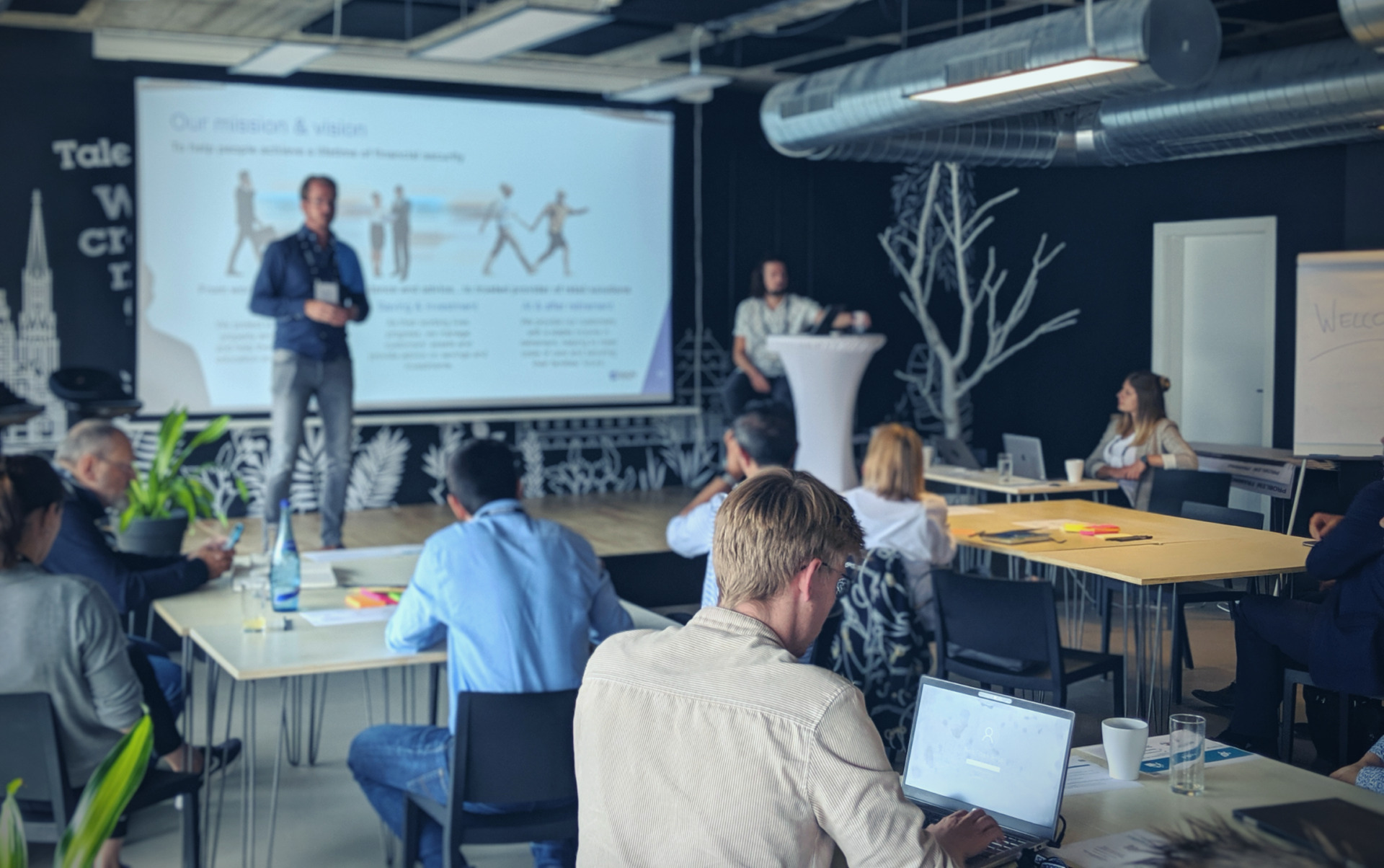
2020 just turned into the year of remote working and it’s no secret: distributing team work remotely can be challenging!
When looking at new challenges such as this, we usually brainstorm and translate problems into “How might we” questions. At the moment, there are lots of these buzzing around our heads: How might we facilitate workshops remotely? How might we facilitate innovation projects online? How might we undertake business development effectively? How might we keep the team spirit and productivity up?
This isn’t the first time we have had to ask ourselves questions related to remote settings. Around this time a year ago, we started discussing an open innovation challenge with Aegon. After looking at potential scenarios, we decided to undertake the project on a nearly fully remote basis. Back then, it posed us with new challenges but soon, we realized the remote setting didn’t impose additional obstacles, it rather opened our eyes to the opportunities and advantages the entire program could benefit from.
Now, it’s the perfect time to share the three greatest opportunities we discovered from running remote programs and, of course, we also added some insights and key learnings we made along the way.
1. Involvement of globally distributed teams
When designing open innovation programs, one key determinant is the constellation of the teams involved. We usually aim for diverse teams with different backgrounds, yet relevant knowledge and skills for the core topic. In this case, we aimed at matching pre-selected employees from Aegon with top-notch startups from all over Europe, while inviting experts to share their knowledge on specific topics such as UX/UI Design. Due to the nearly full remote framework of the program, we had the opportunity to create international teams consisting of the best people in their field and make them work on a solution for the pre-defined use cases. No one had to fly in for every session meaning there was no need to spend a lot of time and resources on travel. All teams benefited from the time saved as they were able to dedicate it to their joint project. Even more importantly, we were able to get professionals on board that couldn’t have been part of a full on-site program. The Aegon Open Innovation Challenge involved around 40 people from more than 10 different countries. We saw Aegon Mentors working hand-in-hand with eight excellent startups and scaleups, rethinking and changing the traditional pension model, the models for yet underserved segments, the solutions regarding health and wellness as well as the traditional insurance distribution model.
“Pioneers helped to run 8 parallel Design Sprints with startups from across Europe. Their assistance, creativity and co- creatorship helped us and the teams to successfully conceptualize 8 submitted ideas. Today, 2 of these ideas are being pursued to become commercial in 2020.”
Casper van der Veen, Head of Business Development, Aegon Continental Europe
2. Flexibility at its best
As mentioned, offering a more dynamic framework for the open innovation program enabled all participants to enjoy more flexibility. It was easier to unite tasks through the program with ongoing work. Increased flexibility did not only ensure the involvement of the right people but also allowed a more elastic setup of the program. Combining approaches from the Google Design Sprint and the Design Thinking methodology with concepts from our previous startup-corporate collaboration programs, we designed a 10-week comprehensive program with the goal of jointly developing innovative concepts for the use cases. In order to provide relevant knowledge, foster multidimensional exchange and guarantee some structure during this journey, we arranged one fixed workshop per week. All other mentoring and working sessions were individually scheduled by the teams. Hence, startups could arrange additional sessions with their mentors when and how they needed them. In this way, we were able to create a structured and flexible program.
3. Leveraging digital tools
While playing a rather subordinate role in on-site programs, digital tools are of critical importance when it comes to remote settings. It’s a great opportunity to test and evaluate new tools. For open innovation initiatives, there’s usually a set of five tools needed to cover all necessary areas and make it work. In our project with Aegon, we decided to use our favorite tools:
- Zoom for web conferencing because of the option of breakout rooms
- Piobay for startup scouting, rating and management
- Be-novative for crowd ideation
- Miro for remote collaboration in form of distributed whiteboards
- Slack for easy communication
One important note when using digital tools remotely is that you have to be flexible. Individual teams should have the freedom to use the set of tools the way they need them. What’s counting is the actual progress towards achieving the goals – in this case, rethinking the traditional business models and developing new solutions to serve Aegon’s existing and future customers together.
“Thanks to the Aegon Open Innovation Challenge not only did startups and Aegon mentors challenge traditional models, but we also had the opportunity to rethink the way we set up innovation projects and discover the unknown upsides. As a result, we are now implementing more and more impactful remote programs together with our clients.”
Harald Fedespiel, Project Lead & Manager, Pioneers
After collecting feedback and having our retrospective meeting, we soon decided to continue working with Aegon virtually, including facilitating design sprints utilizing online tech. Stay tuned!
Find out more about our running programs on our LinkedIn page and get in touch with discover@pioneers.io!
